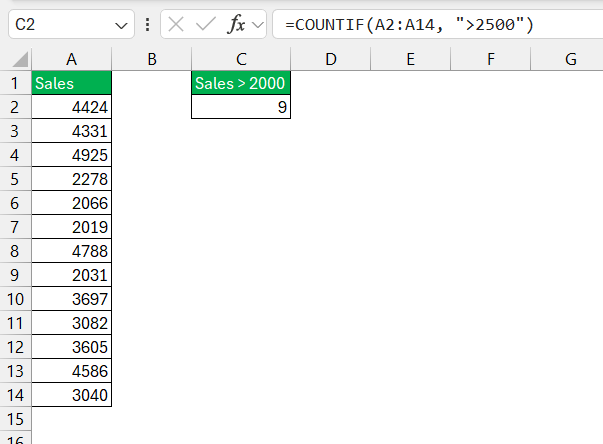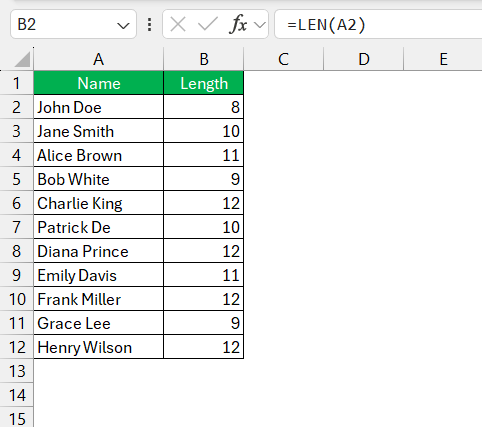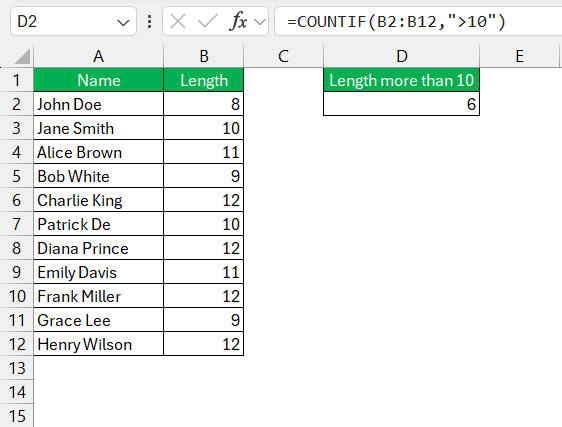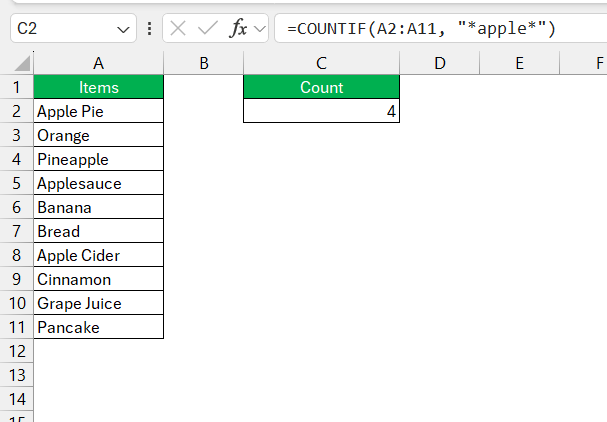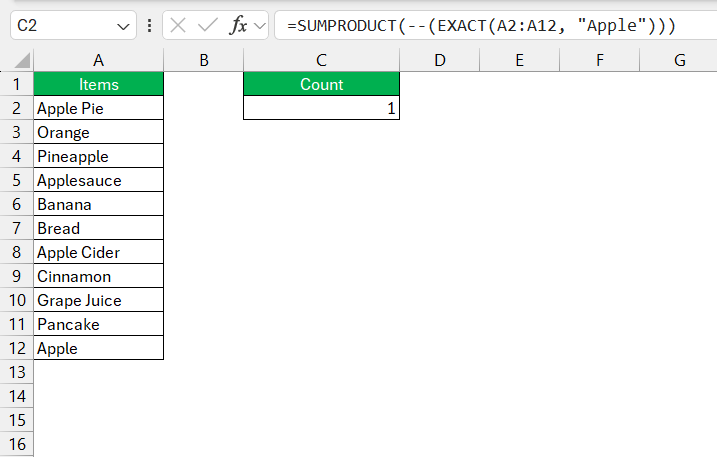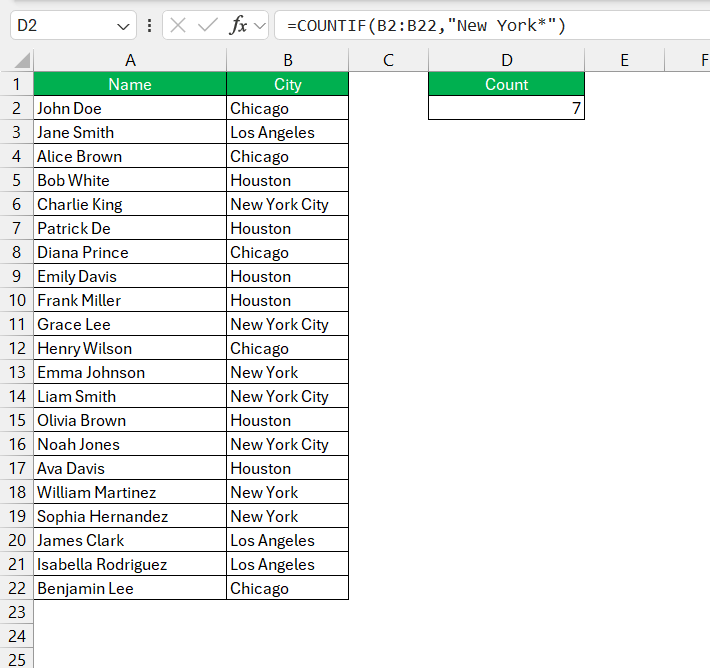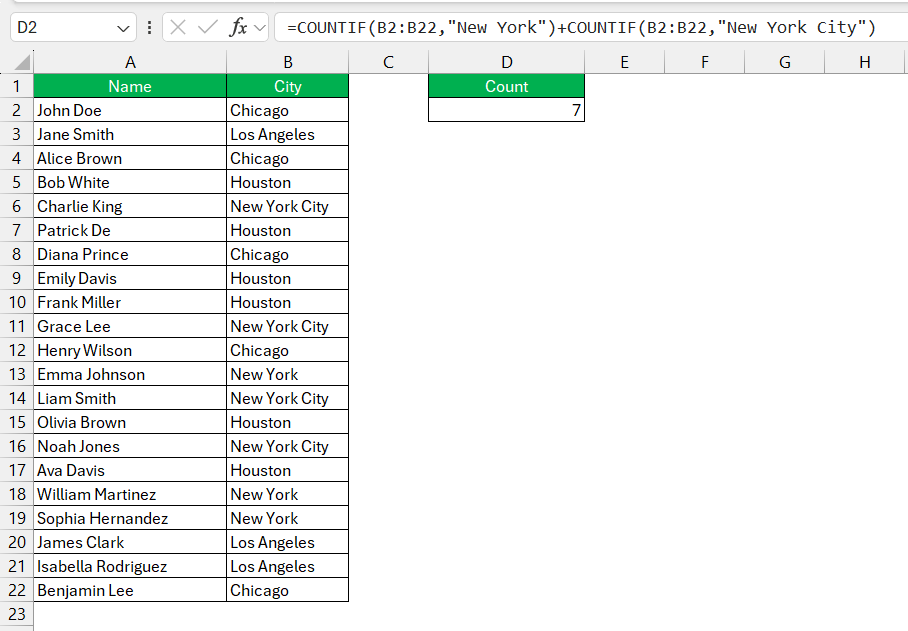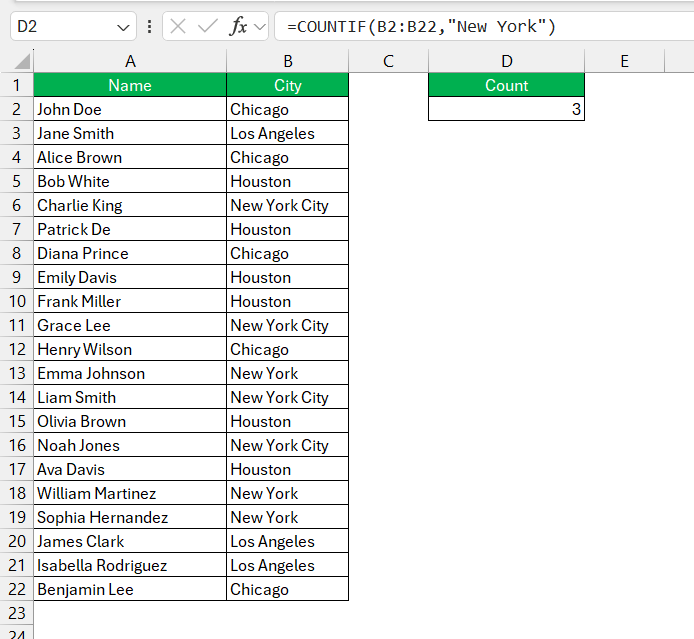The COUNTIF function in Microsoft Excel is a powerful tool used to count cells within a specified range that meet a single condition or criterion. This function is particularly useful for data analysis, allowing users to quickly quantify occurrences of specific values or conditions. COUNTIF can handle various criteria, including numbers, text, and expressions, making it versatile for different types of data sets.
Key Takeaways:
- The COUNTIF function allows quick and efficient tallying of specific text, numbers, or criteria within a designated range, simplifying data analysis tasks.
- Using character counts helps detect inconsistencies in data, ensuring accuracy and uniformity essential for reliable analysis.
- COUNTIF’s flexibility in using numbers, expressions, cell references, and text, including wildcards for partial matches, makes it versatile for various analytical needs.
- COUNTIF is not case-sensitive; for case-sensitive counts, combining it with functions like EXACT and SUMPRODUCT can provide precise results.
- For large datasets, specifying exact ranges and minimizing the use of separate COUNTIF formulas can enhance performance and reduce computation time.
Table of Contents
Introduction to Data Analysis with Excel
The Power of COUNTIF in Excel Analytics
Data analysis in Excel has been revolutionized by the COUNTIF function. This powerhouse tool allows you to quickly tally up instances of a particular text, number, or criteria within a designated range. The beauty of COUNTIF lies in its simplicity and speed, enabling anyone, from beginners to seasoned analysts, to gain insights into their data with minimal effort.
This function not only expedites the data analysis process but also ensures a level of precision that is essential for reliable results.
Assessing Data Quality with Character Counts
Character counts serve as a simple yet effective way to assess the quality of the data in your Excel spreadsheets. By counting the number of characters in cells, you can detect inconsistencies, such as incomplete text entries or data that does not conform to the expected format.
This can be crucial in data cleaning, where the goal is to ensure the information you are analyzing is accurate and uniform. Regularly using character counts can preempt issues that might arise from faulty data, allowing them to identify and rectify these problems swiftly.
Understanding the COUNTIF Function
Syntax and Parameters
When using the COUNTIF function, it’s essential to get the syntax right. The basic syntax is COUNTIF(range, criteria). Here, range refers to the set of cells you want to apply the criteria to, and criteria defines what should be counted.
Parameters play a critical role in determining how COUNTIF functions. The criteria can be a number, expression, cell reference, or text that defines which cells will be counted. For instance, COUNTIF(A2:A14, ">2500") will count all cells with a value greater than 2500 within the range A2 to A14.
You can also use wildcard characters, like * or ?, for partial text matches, which expands the function’s versatility.
Key Functions for Analyzing Character Data
Analyzing character data in Excel often involves more than just counting occurrences. The LEN function is fundamental for character analysis as it gives you the number of characters in a cell, including spaces and punctuation. To count characters in A2, for example, use =LEN(A2).
Now you can add a COUNTIF function to check how many names are greater than 10. Use =COUNTIF(B2:B12,">10")
Count Cells Based on Text Content
Formula Essentials for Text-Specific Counts
When you’re focusing on text-specific counts, Excel offers a number of formulas that cater to your specific needs for analyzing text data. The COUNTIF function is the go-to choice for counting cells that contain certain text. For example, to count the number of times “apple” appears in a range from A2 to A11, you could use the formula =COUNTIF(A2:A11, "*apple*").
Important tip: Use asterisks (*) as wildcards in your COUNTIF function to count any cell where “apple” appears, no matter what other text is around it.
To zero in on cells that contain exactly the text you’re interested in, without any additional characters, omit the wildcards and just write the text in quotations in your COUNTIF criteria.
Case Sensitivity
For case-sensitive counts, incorporate the EXACT function into an array formula (in newer Excel versions, it might not require Ctrl+Shift+Enter) or use a SUMPRODUCT formula, like =SUMPRODUCT(--(EXACT(A2:A12, "Apple"))) to count only the cells that exactly match “Apple” with the case sensitivity.
The impact of case sensitivity on data analysis can be quite significant, as in Excel, the COUNTIF function by itself does not distinguish between uppercase and lowercase letters. Therefore, if your data analysis requires case-sensitive counting, you need to adjust your approach.
Advanced COUNTIF Techniques
Working with Specific Text Values
When your analysis demands counting cells with specific text values, precision is key. Let’s say you want to count how many times “New York” is mentioned in a list that also includes “New York City”. A simple COUNTIF function, =COUNTIF(B2:B22, "New York*"), would count both.
You can also use =COUNTIF(B2:B22, "New York") + COUNTIF(B2:B22, "New York City").
To count only the cells that are exactly “New York”, you’d use an exact match formula: =COUNTIF(A1:A10, "New York").
Best Practices for COUNTIF Analyses
Avoiding Common Errors with COUNTIF Formulas
When you’re tapping into the power of COUNTA for your data analysis, it’s good practice to sidestep common pitfalls that can skew your results. Here are two essential tips for keeping your COUNTIF formulas error-free:
Firstly, data cleaning is fundamental. Before you leap into counting, ensure that there are no extra spaces, inconsistent quotation marks, or nonprinting characters in your cells because these can lead to unexpected outcomes. Excel’s TRIM and CLEAN functions come in handy here—TRIM removes extra spaces, and CLEAN gets rid of nonprinting characters.
Secondly, when setting criteria within COUNTIF, remember that text strings are not case-sensitive, and this can affect your counts. Moreover, include wildcard characters mindfully, understanding that they can either broaden or refine the range of data being counted.
Optimizing Performance in Large Datasets
Working with large datasets in Excel can be processor-intensive, especially when using functions like COUNTIF across thousands of rows. To keep your workbook functioning optimally, consider these techniques:
First off, minimize the use of entire column references like A:A in your COUNTIF functions. Specifying the exact range needed, such as A1:A1000, prevents Excel from processing unnecessary cells and reduces computation time.
Next, avoid having too many separate COUNTIF formulas in a single worksheet. Instead, use a single COUNTIFS with multiple criteria or leverage pivot tables which are designed to handle large amounts of data more efficiently.
In terms of data structure, keep it as flat and clean as possible. Nested formulas and a mix of text and numbers in the same column can slow down calculations.
Another strategy is to break down large datasets into separate, smaller tables or sheets. This not only improves performance but also organizes your data better.
Lastly, Excel’s features like ‘Calculate Now’, or ‘Manual Calculation Mode’ offer control over when and how formulas are recalculated, which can be a significant advantage when dealing with extensive datasets.
FAQ: Mastering COUNTIF for Efficient Analytics
How do you use Countif with characters?
To use COUNTIF characters, define your criteria with the appropriate text. For example, to count the number of cells that end with “s”, use =COUNTIF(range,"*s"). Wildcard characters like the asterisk (*) represent any number of characters, and a question mark (?) stands for a single character in your criteria.
How do I count cells containing specific character lengths?
To count cells with specific character lengths, combine the LEN function with COUNTIF. For example, use =COUNTIF(range, LEN(range)=n) to count all the cells that have exactly ‘n’ number of characters. Replace ‘range’ with your cell range and ‘n’ with the desired character length.
Can COUNTIF distinguish between uppercase and lowercase text?
COUNTIF, by itself, can’t distinguish between uppercase and lowercase text, as it is not case-sensitive. For case-sensitive counting, you’ll need an alternative approach, such as using the EXACT function along with SUMPRODUCT, as in =SUMPRODUCT(--(EXACT(A1:A10, "Text"))), which counts only the cells in the range A1:A10 that exactly match the case of “Text”.
What are some practical business applications of character count analysis?
Character count analysis in business is valuable for verifying data entry formats, such as ensuring consistent customer ID lengths or detecting unusual patterns in transactional data that could indicate errors or fraud. It’s also useful in text analysis, to gauge response length in surveys for quality control, or maintain the precision of content that must adhere to specific character limits, such as for social media posts or product descriptions.
How do you count if a cell contains certain characters in Excel?
To count if a cell contains certain characters in Excel, use the COUNTIF function with a wildcard for partial matching. For counting cells containing “abc” anywhere, use =COUNTIF(range, "*abc*"). If you’re looking to find “abc” at the start, use =COUNTIF(range, "abc*"), and for “abc” at the end, =COUNTIF(range, "*abc").
John Michaloudis is a former accountant and finance analyst at General Electric, a Microsoft MVP since 2020, an Amazon #1 bestselling author of 4 Microsoft Excel books and teacher of Microsoft Excel & Office over at his flagship MyExcelOnline Academy Online Course.

